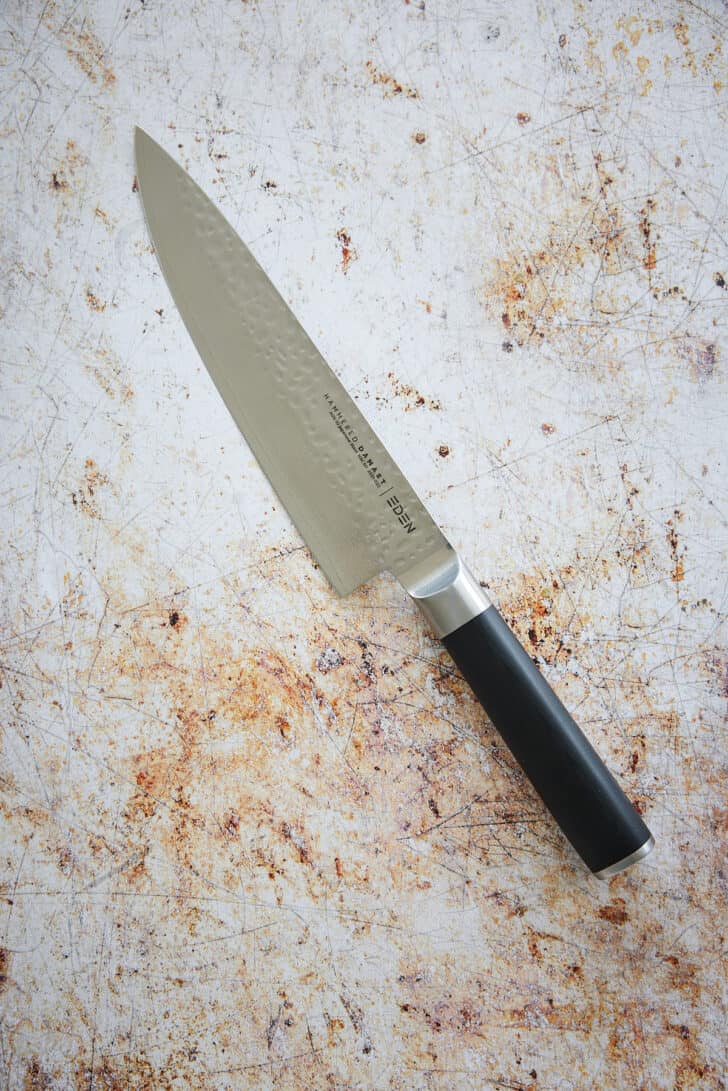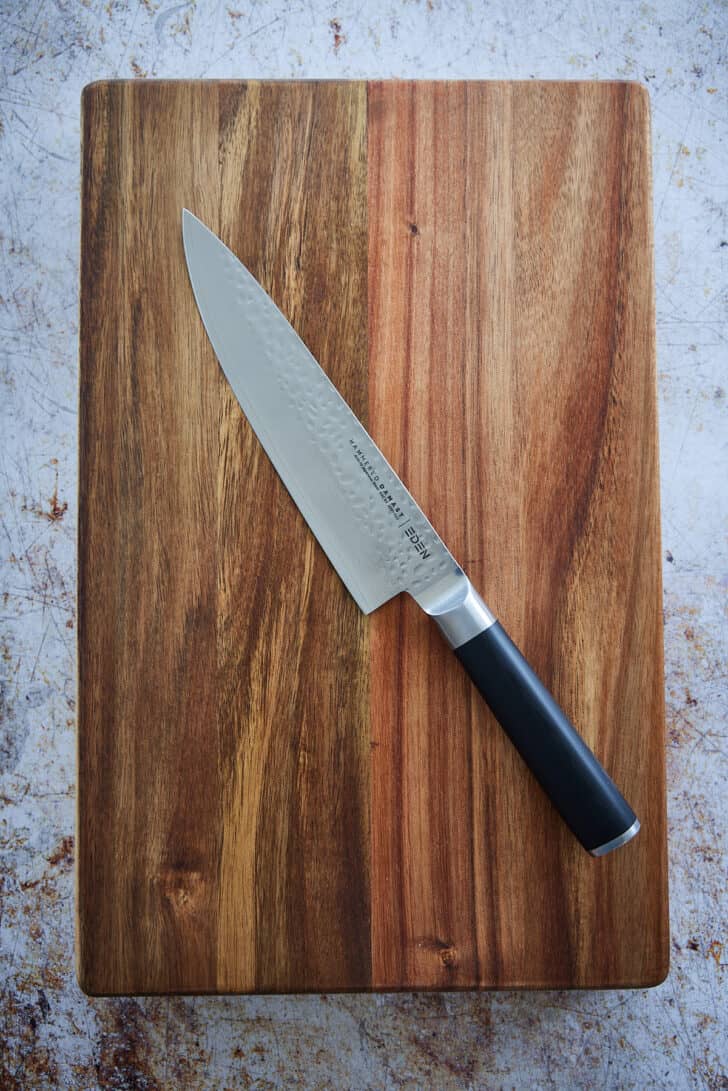How do you maintain your kitchen knives?
The knives we use in the kitchen have to be able to handle quite a lot. And I’m not just talking about the knives in my studio, but also the knives I have here at home will get a bit blunt sooner or later. So if you spend a lot of money on expensive knives, it only makes sense you care for them. But how do you do that?

It all starts with the correct knife and cutting technique
I can’t tell you how often I’ve seen someone cut a leek, celery or other vegetable with a little peeling knife… It happens so often. And yes, of course, a small knife is practical, but it’s way easier to cut an ingredient with the right knife. There are different kinds of knives for a reason. I do have to say that I use my chef’s knife the most of all, since it’s a fairly all-purpose knife. However, I don’t use the chef’s knife when I’m cutting meat, filleting fish or peeling a potato.
How you’re using the knife is also important. For example, using your knife to scrape together your ingredients is bad for the edge of the knife. It’s simply not meant for that. Now if you want to collect your diced tomato, just use the spine of the blade. This way, you won’t damage the sharp edge. So if you’re planning to buy kitchen knives, make sure to treat them properly too.
What kind of surface are you using?
Another very important part of maintaining the quality of your knives is the cutting board you’re using. There are several materials to be found on the market, but my all-time favourite is a wooden cutting board. You often see plastic boards and you also come across some made of glass. The latter is my least favourite, it just isn’t great to use. The plastic board is practical and I mainly use it to cut things like fish or meat. You can stick to the various ‘official’ colors for determining which ingredient to cut on which board. This is something that’s mainly used in professional kitchens but that can also be nice to use at home. Especially for things like fish, chicken and other meat.
- Blue cutting boards – fish
- Yellow cutting boards – chicken and other poultry
- Red cutting boards – raw meat
- Green cutting boards – salad, fruit and fresh vegetables
And then you have brown cutting boards (for roast meat and sausages) and white ones (for bread and cheese). I only have blue and white myself. And I don’t use the white one for bread and cheese, but I do use it for chicken. Um… as long as you understand your own system it’s fine, right?
But in terms of hygiene and convenience, I always opt for the wooden cutting board. If you treat it well and apply a little coat of oil regularly, a wooden board will last a very long time. And – contrary to what many people think – it is also more hygienic than a plastic cutting board.


Moreover, a wooden board is the best choice if you also want to keep your knives sharp.
Cleaning
In the studio, it happens quite often that people put knives in the dishwasher. No matter how many times I tell them that’s not what I want. After all, knives are best cleaned by hand with plain soap and water. In the dishwasher – in mine at least – they are often ‘thrown’ on top of each other, which can damage the cutting edge. Moreover, it is disastrous for knives with a wooden handle and the aggressive detergents can also damage the knife.
That’s plenty of reason to wash your expensive knives with a soapy water. Also, do not leave them in a sink as rusting can occur or the blade can be stained by food particles.
Sharpening your knives
Sooner or later, your knives will become blunt, that’s just a fact of life. Even knives that supposedly never need sharpening do, in fact, become blunt after use. That’s my experience, at least.
I recently got this Skerper sharpening set for my knife maintenance, because proper sharpening is essential. People often think that a sharp knife is dangerous, but a blunt knife is actually much more dangerous!
Of course, using a set like this does take some practice. I have a video for you here, because I am still practising! Soon there will be a video where I show you how to do it myself, but I don’t think I can explain it as well as this gentleman.
Storing your knives
Last but not least, of course, you need to store your knives. I must confess that I have so many knives in the studio that the older (cheaper) knives are in a drawer. That’s not the best option, because just like in the dishwasher, they can get damaged if you put the knives on top of each other. The best way to store your knives is by using a knife block or a magnetic strip. At home I have a magnetic strip, in the studio there is a knife block.
And my expensive knives? I hide those in the studio so that I’m the only one using them. By the way, you could also get knife protectors and knife pouches for when you need to take your knives somewhere (or want to hide them in your studio. Hahaha)
Disclaimer: This post is a collaboration with Knivesandtools. As always, all opinions are my own.
